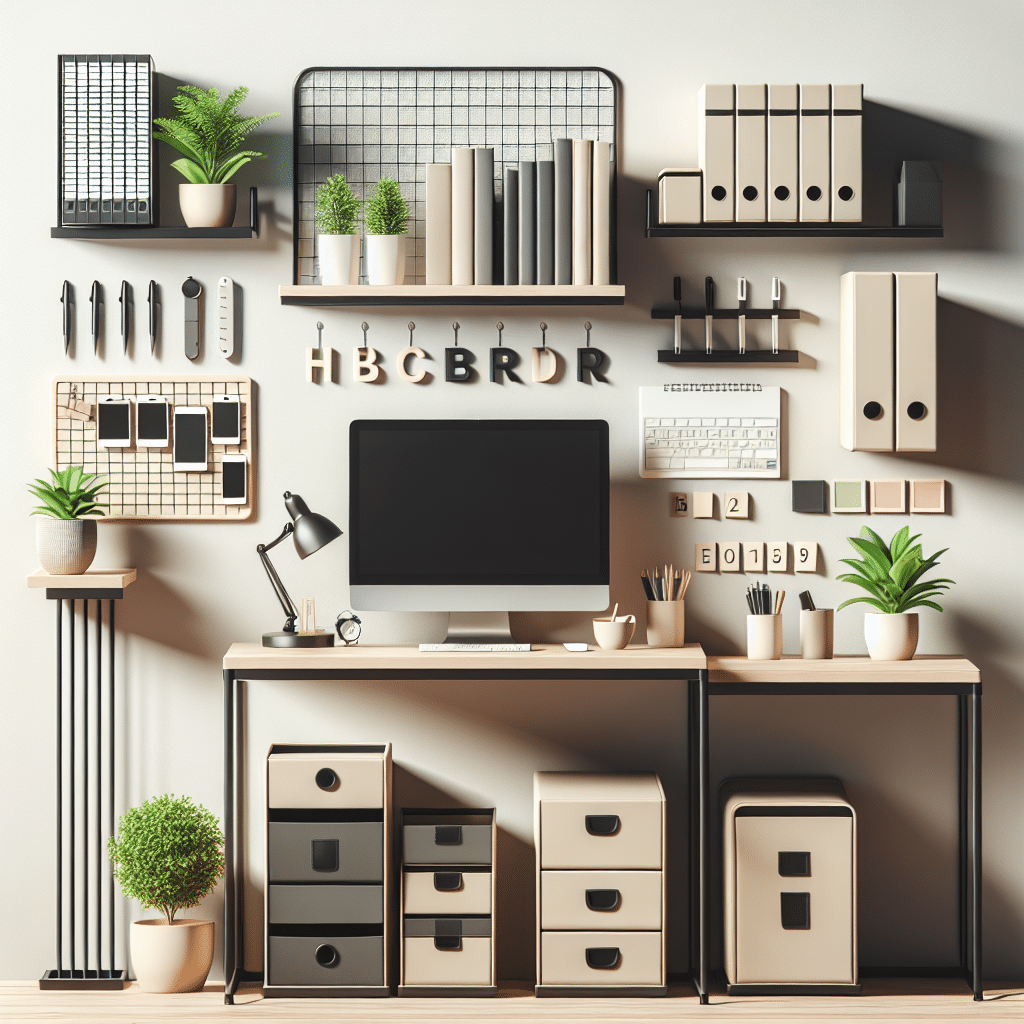The Art of Arranging Desk Accessories for Small Offices
1. The Importance of Desk Organization
A well-organized desk plays a crucial role in boosting productivity, especially in small office spaces where every inch counts. Arranging desk accessories strategically allows for easy access to essential items and minimizes distractions. By creating an efficient workspace, you enhance focus and creativity.
2. Assess Your Space
Before arranging accessories, evaluate your desk layout. Measure your desk to understand the available surface area and consider the distance to power sources. A clutter-free environment starts with knowing how much space you have at your disposal.
3. Prioritize Essential Items
Identify the essential items you use daily, such as your computer, monitor, keyboard, and telephone. These should take precedence in your layout. Place frequently used accessories like notepads, pens, and sticky notes within arm’s reach to reduce time spent searching for them.
4. Utilize Vertical Space
In small offices, vertical space is invaluable. Use shelves, pegboards, or wall-mounted organizers to store items off the desk. This practice frees up surface area while keeping essential accessories visible. Wall-mounted file holders can neatly store documents, freeing vital desk space.
5. Choose the Right Desk Accessories
Select accessories that complement your workspace’s aesthetic while serving functional purposes. Here are a few types of accessories to consider:
- Desk Organizers: Opt for multi-compartment organizers that keep pens, paper clips, and sticky notes tidy.
- Cable Management Solutions: Use cord clips, cable sleeves, or under-desk trays to minimize the visual chaos caused by cords and cables.
- Task Lighting: A compact LED desk lamp not only brightens your workspace but also aids in reducing eye strain.
6. Desktop Layout Strategies
An effective desktop layout can significantly improve your workflow. Consider these strategies:
- Zoning: Divide your desk into zones based on function. For instance, keep your writing area separate from your computer zone.
- Clutter Control: Use trays or baskets to contain smaller accessories. Establish a “one in, one out” rule to maintain minimalism.
- Visual Hierarchy: Position taller items such as pen holders towards the back of the desk and shorter items in front to create a visually appealing setup.
7. Personalized Touches
Adding personal elements can enhance your motivation. Incorporate a few personal items such as:
- Photos: A small frame with personal photos can bring positivity and remind you of your goals.
- Plants: Consider small plants like succulents or air plants that require minimal maintenance. They enhance air quality and boost mood.
- Art Pieces: Displaying artwork or inspirational quotes can personalize your space, making it more inviting.
8. Create a Filing System
A simple filing system is essential for maintaining a clutter-free desk. Here are ways to implement an effective system:
- Digital vs. Physical: Decide which documents need to be physical and which can be stored digitally. Use cloud storage for easy access.
- Labeling: Use file folders and label them clearly for easy identification.
- In & Out Trays: Use two trays, one for items needing action and another for sorted paperwork. This ensures the desk remains free from piles.
9. Maintain Regular Maintenance
Regularly assess the state of your desk organization. Schedule weekly check-ins to declutter and reorganize. Dusting and cleaning your desk accessories will keep the workspace fresh and appealing.
10. Ergonomics Matter
Beyond aesthetics, prioritize ergonomics. Your workspace should encourage proper posture to prevent strain and injury. Follow these tips:
- Monitor Height: Your computer monitor should be at eye level. Use risers if necessary to achieve this.
- Keyboard Positioning: Position your keyboard so that your elbows are at 90 degrees while typing.
- Chair Selection: Invest in an ergonomic chair that supports your back while allowing mobility.
11. Minimalist Approach
Adopting a minimalist approach is ideal for small offices. Focus on essentials and choose quality over quantity. A simple setup often leads to less stress and more productivity.
12. Consider Color Schemes
Utilizing a cohesive color scheme not only enhances visual appeal but can also improve focus and mood. Choose desk accessories in colors that inspire creativity or calmness, depending on your work requirements.
13. Use Smart Technology
Integrate technology to streamline tasks:
- Smart Speakers: Consider a smart speaker for hands-free operation, allowing you to play music, set reminders, or check the weather without cluttering your desk.
- Wireless Chargers: These eliminate cords while keeping your smartphone within reach.
14. Experiment with Layouts
Don’t be afraid to change the arrangement periodically. Experimenting with layouts can help you identify what suits your workflow best.
15. Gather Inspiration
Search for inspiration from photos of well-organized desks shared online. Platforms like Pinterest and Instagram provide abundant ideas tailored to small spaces.
16. Engage in Themes
Engaging with themes can create a cohesive look. Whether you pursue a modern, rustic, or industrial style, ensure your accessories align with the chosen theme to enhance aesthetic consistency.
17. Seek Functionality
When choosing accessories, consider their functionality. Items with dual purposes, such as a notepad holder that also serves as a paperweight, can save space and maintain organization.
18. Set Up a Workspace for Different Tasks
If your work involves various tasks, consider setting up smaller zones for differing activities. A creative corner could facilitate brainstorming, while a focused area supports administrative work.
19. Use Smart Storage Solutions
Implement storage solutions that don’t sacrifice space. Drawer organizers can separate supplies while file boxes can be placed underneath the desk to hold notebooks and reference materials.
20. Find Local Stores with Stylish Options
Research local office supply or home décor stores for stylish storage and organization solutions that reflect your personal style, making it easier to blend functionality and aesthetics.
Arranging desk accessories in small offices isn’t just about cleanliness; it’s an essential strategy for enhancing productivity, comfort, and visual appeal. By following these detailed steps, you can create a workspace that is not only organized but also inspires creativity and efficiency.
